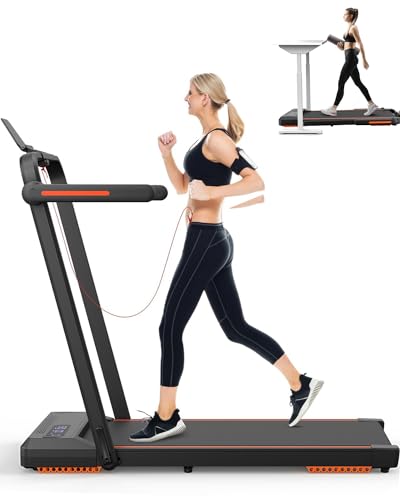8 Tips For Boosting Your Walking Machine Game
페이지 정보

본문
The Walking Machine: A Comprehensive Guide to Your Fitness Companion
In today's busy world, where time is a luxury, maintaining a consistent workout regimen can be an obstacle. For many, a walking machine-- commonly called a treadmill-- functions as a perfect physical fitness companion. This short article offers an extensive take a look at walking machines, including their benefits, types, upkeep pointers, and regularly asked concerns.

Why Choose a Walking Machine?
Walking machines use a practical and reliable method to include cardiovascular workout into daily life. Here are numerous key benefits:
- Convenience: Walking machines allow individuals to work out anytime, regardless of weather or time constraints. They are perfect for busy schedules.
- Adaptability: Users can walk, jog, or run at their own rate and strength.
- Security: Walking machines present a lower danger of injury compared to outdoor walking or running, specifically for newbies or those recuperating from injuries.
- Tracking Progress: Many treadmills featured integrated displays that track metrics like speed, distance, and calories burned.
Types of Walking Machines
When considering a walking machine, it's essential to pick the best type based upon specific physical fitness goals and area restrictions. Below are the primary kinds of walking machines:
| Type | Description |
|---|---|
| Handbook Treadmills | These machines do not have a motor, and users require to stroll or run to rotate the belt. |
| Electric Treadmills | Powered by an electric motor, allowing users to set the speed and incline effortlessly. |
| Folding Treadmills | Designed for simple storage, these treadmills can be folded when not in use. |
| Desk Treadmills | Ideal for a double work and exercise environment, these compact machines allow walking while working. |
| Incline Trainers | These enable users to replicate uphill walking, boosting workout intensity and calorie burn. |
Picking the Right Walking Machine
Choosing the right walking machine can significantly affect inspiration and efficiency. Here are some aspects to consider:
Key Features to Look For
- Motor Power: An effective motor ensures a smooth and consistent exercise. For occasional walkers, a 1.5 HP motor is generally sufficient; for heavier use, look for 3.0 HP and above.
- Belt Size: A larger and longer belt provides more area for a comfy stride. Requirement sizes vary from 16 inches large and 50 inches long.
- Slope Options: Adjustable incline settings can mimic walking or running uphill, increasing the strength of the workout.
- Shock Absorption: Good shock absorption lowers the threat of joint injuries and boosts comfort.
- Console Features: Look for integrated exercises, heart rate monitors, and connection functions like Bluetooth for a more appealing experience.
Budget plan Considerations
Walking machines come in a large range of rates, depending upon features and building and construction quality. Here's a rough budget plan breakdown:
| Price Range | Functions |
|---|---|
| Under ₤ 300 | Basic handbook or small electric treadmills with limited functions. |
| ₤ 300 - ₤ 700 | More innovative electric treadmills with incline, medium power motors, and much better warranties. |
| ₤ 700 - ₤ 1500 | Top quality electric treadmills with bigger built-in displays, substantial functions, and service warranties. |
| ₤ 1500 and above | High-end models providing sophisticated innovation, features, and resilient building for major physical fitness lovers. |
Maintenance Tips for Your Walking Machine
To guarantee longevity and ideal efficiency of a walking machine, think about the following upkeep tips:
- Regular Cleaning: Dust and sweat can collect on the machine and the belt. Wipe down the surface areas and tidy the belt frequently.
- Lubrication: Depending on the design, oiling the running belt periodically can avoid wear and tear. Check the maker standards for advised lubrication schedules.
- Inspection: Periodically examine the machine for loose screws or worn parts. Tighten and change as needed.
- Calibration: Occasionally, check the calibration of your machine's metrics to guarantee they offer precise data.
- Appropriate Use: Follow the manufacturer's suggestions for weight limitations and functional standards.
FAQs About Walking Machines
1. Are walking machines a great workout?
Yes, walking machines offer an excellent cardiovascular exercise, can aid with weight-loss, and improve total health.
2. How frequently should I use a walking machine?
Go for a minimum of 150 minutes of moderate-intensity aerobic activity weekly, which can quickly be accomplished with regular sessions on a walking machine.
3. Can I reduce weight on a walking machine?
Yes, integrating a walking machine routine into a healthy diet plan can promote weight reduction, particularly if integrated with periods and incline training.
4. Is it safe for seniors to utilize a walking machine?
Yes, walking machines can be safe for elders with low-impact settings and security features like hand rails. However, individuals ought to consult with their healthcare service provider before starting any exercise program.
5. What's the difference in between a treadmill and a walking machine?
The term "walking machine" typically describes a treadmill planned for walking, while "treadmill" can describe machines used for various intensities, consisting of running.
With their flexibility and benefit, walking machines can substantially enhance one's fitness journey. By thoroughly selecting the ideal type, making sure correct maintenance, and including various exercise strategies, users can maximize their walking machine's benefits. Similar to any exercise program, consistency is key to attaining enduring physical fitness results.
- 이전글5 Killer Quora Answers On Audi A1 Key Replacement 25.08.06
- 다음글10 Wrong Answers To Common Window And Door Replacement Questions: Do You Know The Right Ones? 25.08.06
댓글목록
등록된 댓글이 없습니다.

